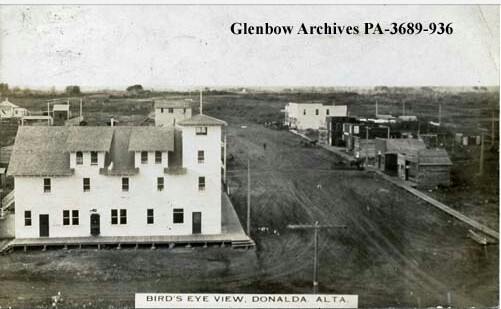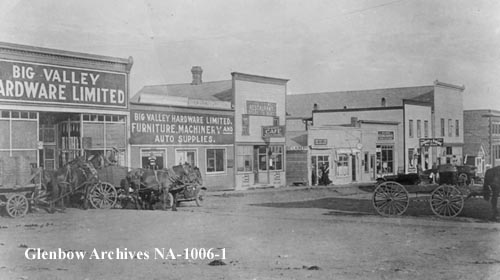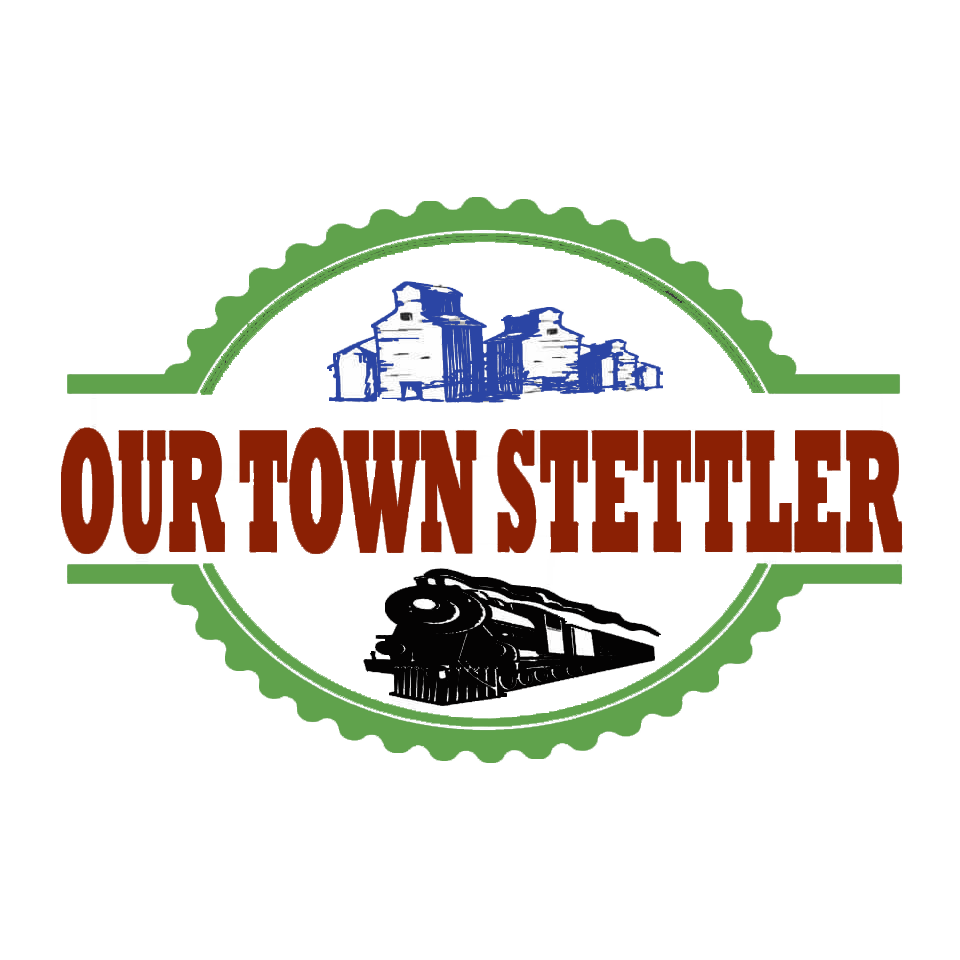| The growth of Stettler into what it is today, was at one point, considered the fastest growth of any community in Alberta. However there were several towns in the area that very well could have become the next Stettler. The village of Content, which predated the creation of Stettler, was originally believed to be the destination of the CPR spur from the north-south C&E line. However when that did not happen, many people eventually picked up and moved. The community of Mayvrille had assumed they were on the right track when they setup east of Stettler. However a slight change in the routing, and the community of Mayvrille found itself off the route, and would move to what quickly became the community of Botha. |
| Other communities would stand the test of time, but not always as the major centers they once were. Castor was a huge stopping point on the C.P. Line, due to the coal deposits in the area. Because of this, Castor, and places like Coronation, and Consort, experienced early swells of settlers, often leading them to construct large schools, and public buildings. However now these places are small blips (although beautiful ones) along the hiways. Big Valley had been a major center for Canadian Northern(eventually Canadian National) on their southern line from the coal fields of Brazeau. However politics (and in my opinion savage pettiness) would cause CN to move the Big Valley operations to Mirror, and Big Valley would lose a huge percentage of their population from the location being downgraded. |
| CONTENT |
Content was a thriving village in 1903. I had all the ammenities of any decent village of its time. A doctor, a drug store, several shops, a hotel, and for a while, the only post office between Lacombe and what would become the Saskatchewan border.The town was hopeful of becoming the next stop along the C.P.R line from Lacombe, and in 1905, went as far as dispatching two delegations to meet with the newly elected premier Rutherford, and discuss the matter. It was with this hope, and the belief that there was no other logical choice, that the town of Content continued to grow. However, it had always been the C.P.R. who picked their routes, and destinations, and never politicians, and so it was an absolute shock to the citizens of Content when the C.P.R. announced that they felt COntent was too far out of the way of the Lacombe trail, which was a busy route for settlers, and did not pick it as their next site.
 The village of Content, sat and waited. It had grown to a fair size, and although passed by at the time, it hoped something good would come about. Then in 1918 a fire struck the village, and destroyed the hardware store owned by Russel Wilkinson. Mr. Wilkinson moved and, and was followed by other merchants who had sadly given up on the once promising future of the upstart community. In a few years, only the home of Hugh McTaggart was still prominent in the landscape that was once a rather successful area.
The village of Content, sat and waited. It had grown to a fair size, and although passed by at the time, it hoped something good would come about. Then in 1918 a fire struck the village, and destroyed the hardware store owned by Russel Wilkinson. Mr. Wilkinson moved and, and was followed by other merchants who had sadly given up on the once promising future of the upstart community. In a few years, only the home of Hugh McTaggart was still prominent in the landscape that was once a rather successful area. |
| DONALDA |
Originally known as Eidswold, it was changed to Donalda in 1911, and would be incorporated as a village in 1913. The population in December of 1912, was 200 people. The town supported a variety of businesses including: 1 barber shop, 2 blacksmith shops, 1 Chinese restaurant, 2 Hardware stores, 1 hotel, and 2 coal mines.
 The first area store was built in 1902. It was operated by Joseph Nevau, and was owned by Norman Smith. Frieght was brought in from Wetaskiwin, and was sometimes brought in by customers who were paid $.50/hundred pounds. Mr. Thirsk bought the store in 1903 and was later sold in 1927, when in was converted to a shop. Another early business in the area was owned by Mr. S.P Lee. It was located 2 miles west, adn 3 miles south of what would eventually be come Eidswold/Donalda. Once the Store arrived, Mr. Lee built another store inside the townsite.
The first area store was built in 1902. It was operated by Joseph Nevau, and was owned by Norman Smith. Frieght was brought in from Wetaskiwin, and was sometimes brought in by customers who were paid $.50/hundred pounds. Mr. Thirsk bought the store in 1903 and was later sold in 1927, when in was converted to a shop. Another early business in the area was owned by Mr. S.P Lee. It was located 2 miles west, adn 3 miles south of what would eventually be come Eidswold/Donalda. Once the Store arrived, Mr. Lee built another store inside the townsite.
|
|
BIG VALLEY |
The area of Big Vally was surveyed in 1884. With the great distances to the railroads in Red Deer, and Lacombe, grain export wasn't the most feasible, so the area became a large center for ranching. Early ranches in the area included Pat Burns' Ranch. He was the founder of P. Burns Packing Company Ltd, and originally operated the Imperial Ranch.
 Early settlers in the area, originally experienced rather mild winters until 1906, and 1907 when temperatures reached -60. Before the Canadian Northern (Canadian National) came to Big Valley in 1910/1911, supplies for the settlers were picked up in either Content or Stettler. The trips were made several times a year, and could take more than 3 days to complete.
Early settlers in the area, originally experienced rather mild winters until 1906, and 1907 when temperatures reached -60. Before the Canadian Northern (Canadian National) came to Big Valley in 1910/1911, supplies for the settlers were picked up in either Content or Stettler. The trips were made several times a year, and could take more than 3 days to complete.
|
|
|







